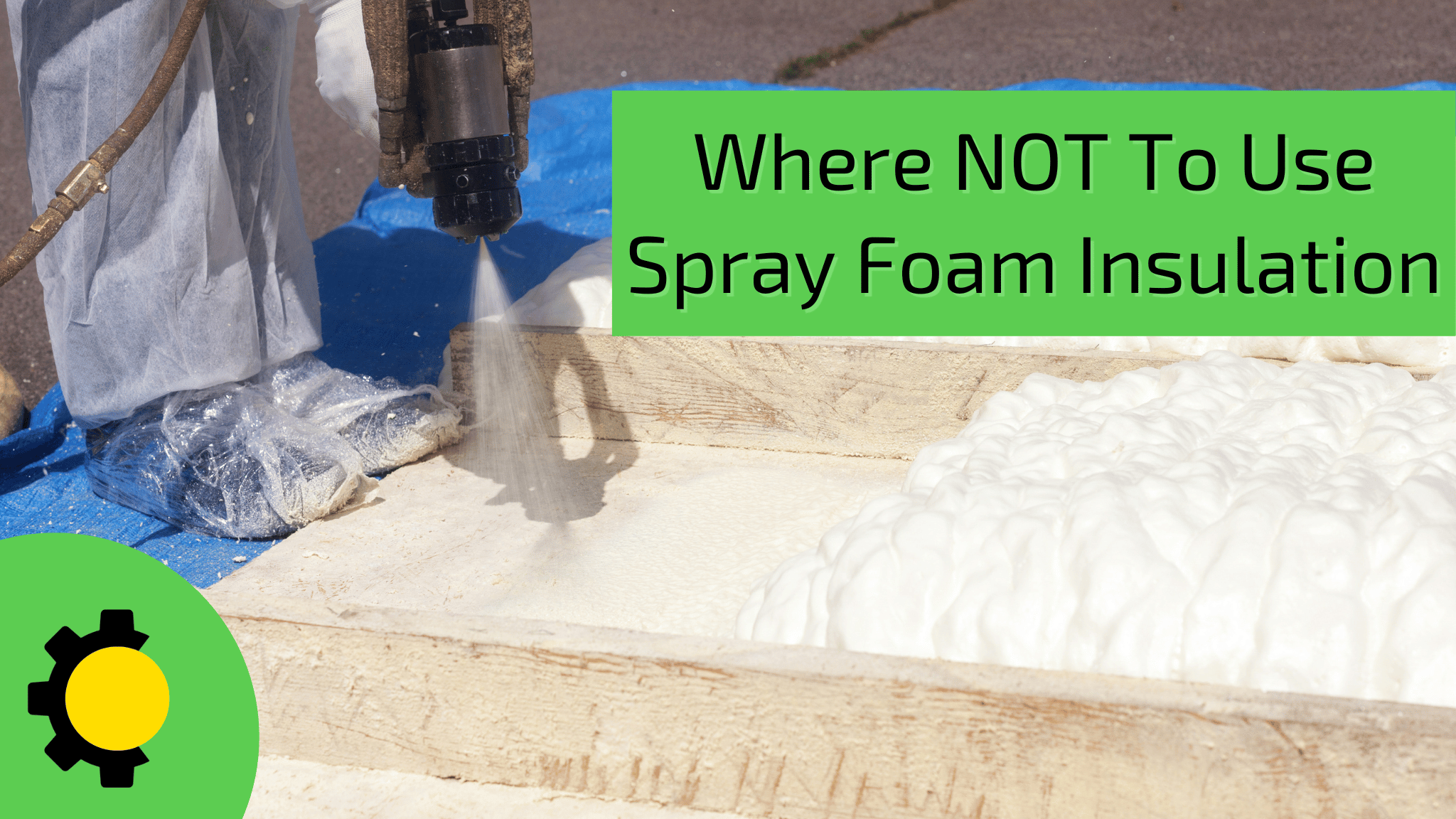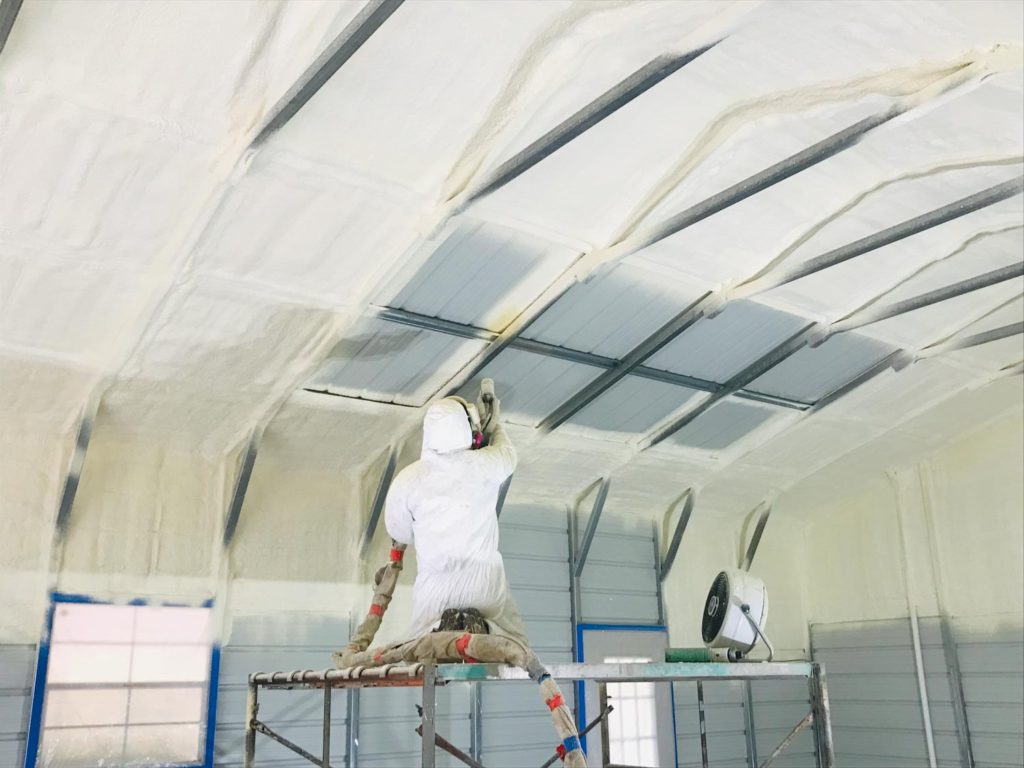Frequently Asked Questions About Spray Foam Installation and Usage
Frequently Asked Questions About Spray Foam Installation and Usage
Blog Article
Spray Foam: The Ultimate Solution for Air Sealing and Insulation
Spray foam insulation has arised as a leading solution for efficient air securing and thermal insulation, using an unique mix of residential properties that establish it apart from traditional approaches. Comprehending the full scope of its advantages, installment processes, and contrasts with various other insulation kinds is critical for making notified choices.
What Is Spray Foam?
Spray foam is a versatile insulation product that integrates the principles of air securing and thermal resistance to boost power efficiency in structures. Composed mostly of polyurethane or various other similar compounds, spray foam is applied as a liquid that expands upon call with surfaces, creating a solid, constant layer of insulation. This unique residential property enables it to fill up voids, cracks, and gaps that conventional insulation products may forget, giving a superior air seal.
There are 2 main kinds of spray foam: open-cell and closed-cell. Open-cell spray foam is lighter and more flexible, providing excellent noise absorption and a lower R-value per inch - Spray Foam. In comparison, closed-cell spray foam is denser, supplying a higher R-value, moisture resistance, and added structural honesty to building parts
The application procedure commonly includes specialized tools, guaranteeing a seamless application that abides by different substratums, consisting of wood, concrete, and metal. This versatility makes spray foam appropriate for both new constructions and retrofitting existing frameworks. Its capability to create an airtight obstacle considerably adds to lowering power consumption and improving indoor air high quality, consequently making it a recommended option amongst property owners and building contractors alike.
Advantages of Spray Foam Insulation
Among the most substantial advantages of spray foam insulation is its outstanding capability to produce a continuous air obstacle, which successfully decreases energy loss. Unlike typical insulation materials, spray foam broadens to fill up voids and fractures, making certain that air leakage is considerably lowered. This characteristic not only boosts energy effectiveness however additionally leads to reduce utility expenses gradually.
In addition, spray foam insulation supplies remarkable thermal resistance, contributing to an extra steady interior environment. Its high R-value per inch enables effective insulation in confined spaces, making it optimal for attic rooms, wall surfaces, and crawl areas. In addition, the moisture-resistant residential or commercial properties of spray foam assistance avoid mold and mildew and mildew growth, promoting healthier living problems.
An additional crucial benefit of spray foam insulation is its sound-dampening high qualities (Spray Foam). It properly reduces sound transmission between rooms, developing a quieter and more comfy home environment. The resilience of spray foam likewise stands apart, as it does not sag or resolve in time, keeping its efficiency throughout its life expectancy
Exactly How Spray Foam Functions
Comprehending exactly how spray foam insulation works is important for appreciating its effectiveness in air sealing and thermal resistance. Spray foam insulation includes 2 main parts: isocyanate and polyol resin. When these parts are blended, they go through a chain reaction that creates the product to broaden rapidly, creating a dense foam that fills up fractures, voids, and dental caries.
As the foam increases, it sticks to surface areas, developing an impermeable seal that substantially lowers air infiltration. This particular makes spray foam insulation highly effective at preventing drafts and dampness penetration, which can lead to energy loss and damage in time. Furthermore, the closed-cell variation of spray foam uses exceptional thermal resistance due to its stiff structure, successfully minimizing heat transfer.
The unique properties of spray foam permit it to comply with irregular surface areas, guaranteeing extensive insurance coverage and a seamless barrier. Therefore, spray foam insulation not only boosts Get the facts power efficiency however likewise contributes to improved indoor air high quality by reducing the accumulation of contaminants and irritants. Ultimately, understanding the mechanics behind spray foam highlights its function as a superior choice for insulation and air sealing in both commercial and domestic applications.
Setup Process Introduction

Before installation, the area must be properly cleansed and prepped, ensuring that surfaces are without dust, debris, and wetness. Because impurities can compromise attachment and overall efficiency, this step is crucial. Once the area is prepared, the application involves blending both parts of the spray foam, which increases upon great post to read call and loads voids efficiently.
Trained specialists must conduct the setup, utilizing specific tools to make sure consistent protection and optimum thickness. Safety and security safety measures, consisting of using safety equipment and making certain appropriate air flow, are essential during this process. After application, the foam normally cures swiftly, forming a strong obstacle that enhances energy effectiveness.
Comparing Spray Foam to Conventional Insulation
When reviewing insulation choices, spray foam insulation stands out in comparison to traditional products such as fiberglass and cellulose. Unlike fiberglass and cellulose, which can permit air infiltration, spray foam expands upon application, filling up spaces and holes to create an airtight seal.
Furthermore, spray foam supplies a higher R-value per inch than typical insulation kinds, using even more efficient thermal resistance in a thinner account. This particular is particularly helpful in rooms with minimal dental caries depth. Spray foam is resistant to dampness and mold and mildew growth, which can be a substantial issue with cellulose and fiberglass, particularly in humid environments.
However, spray foam insulation generally brings a greater upfront expense than its standard equivalents. House owners have to weigh this preliminary investment against lasting power financial savings and efficiency benefits. Eventually, while both insulation kinds check serve their purpose, spray foam becomes an advanced service for modern insulation needs, particularly in terms of air securing and thermal performance.

Final Thought
In recap, spray foam insulation stands for a highly reliable option for achieving ideal air sealing and thermal resistance. Its special buildings, including wetness resistance and sound dampening, make it ideal for numerous applications in both new building and constructions and retrofitting tasks (Spray Foam). The preliminary expenses may be higher compared to typical insulation materials, the long-term benefits, such as substantial energy financial savings and enhanced interior air quality, validate the financial investment and highlight its worth in modern-day building techniques.
Spray foam insulation has actually arised as a leading remedy for reliable air sealing and thermal insulation, using an unique combination of buildings that set it apart from traditional approaches.Spray foam is a flexible insulation material that combines the principles of air securing and thermal resistance to boost energy effectiveness in buildings.When assessing insulation options, spray foam insulation stands out in contrast to traditional products such as fiberglass and cellulose. Eventually, while both insulation types serve their objective, spray foam arises as an extra advanced solution for modern-day insulation needs, specifically in terms of air sealing and thermal performance.
In summary, spray foam insulation represents an extremely effective solution for accomplishing ideal air sealing and thermal resistance.
Report this page